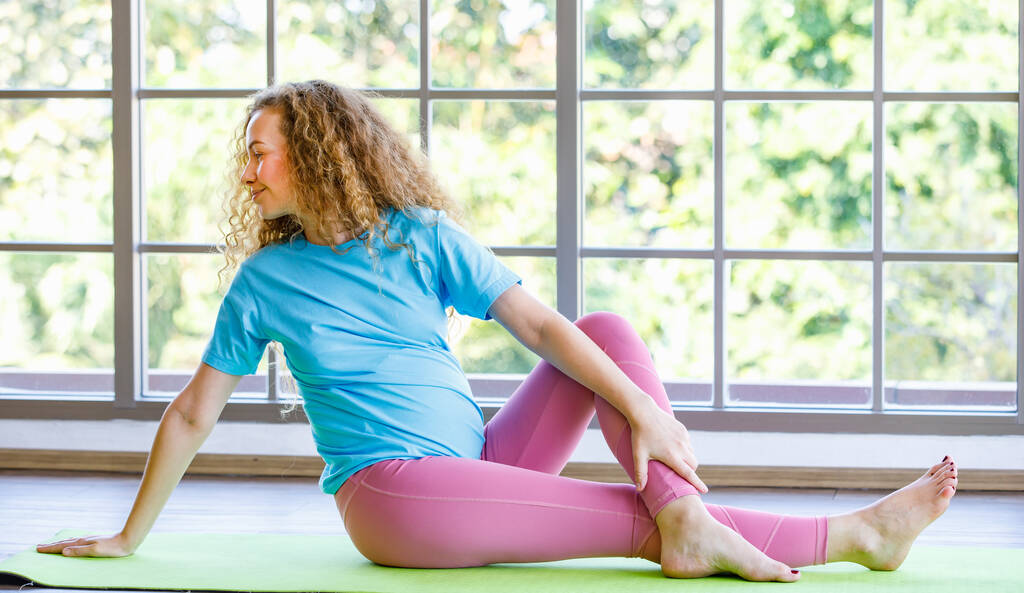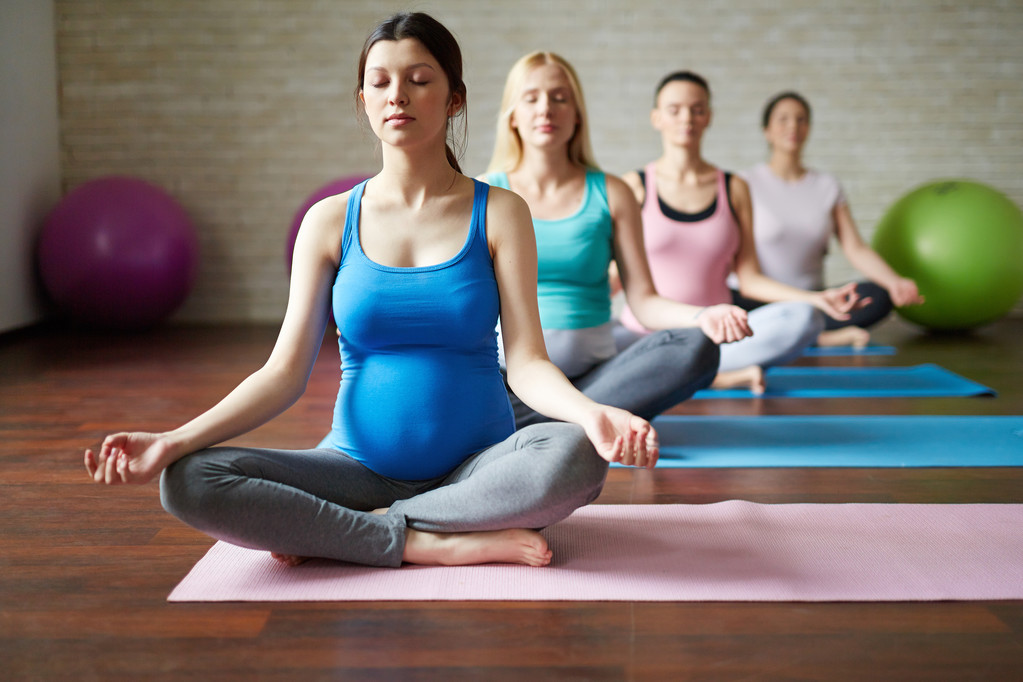Discover the best prenatal yoga poses to alleviate back pain during pregnancy.
Prenatal Yoga Poses for Back Pain Relief: What You Need to Know
Being pregnant can bring about a whole new set of challenges for your body, and one common issue that many expectant mothers face is back pain. The good news is that prenatal yoga can be a great way to find relief and ease those aches and pains. In this article, we’ll explore some essential prenatal yoga poses for back pain relief, dive into the benefits of practicing prenatal yoga beyond just relieving back pain, and provide some tips for safely incorporating yoga into your routine during pregnancy.

Understanding Prenatal Back Pain
Before we jump into the yoga poses, let’s take a moment to understand why back pain is so common during pregnancy. As your baby grows, your center of gravity shifts, putting extra pressure on your lower back. This increased weight can cause discomfort and strain on the muscles and ligaments in your back. Additionally, hormonal changes during pregnancy can loosen your ligaments and joints, making your back more prone to discomfort. Your expanding belly can also lead to poor posture and strained muscles as you adjust to accommodate your growing baby.
Now that we have a better understanding of the physical changes that contribute to back pain during pregnancy, let’s explore some other factors that can exacerbate the issue. Lack of exercise can weaken the muscles that support your spine, making it more difficult to maintain proper posture and increasing the likelihood of experiencing back pain. Incorrect posture, such as slouching or hunching over, can also put additional strain on your back. Lastly, the emotional and physical stress that often accompanies pregnancy can contribute to muscle tension and discomfort in the back.
How Yoga Can Help Alleviate Back Pain
Yoga is a wonderful practice for expectant mothers because it combines gentle stretching, strengthening, and relaxation techniques. The poses specifically geared towards prenatal back pain can help to relieve tension, improve posture, and increase flexibility. By incorporating gentle movements and stretches, yoga can help to alleviate the pressure on your lower back and strengthen the muscles that support your spine.
In addition to the physical benefits, yoga also provides an opportunity for deep breathing and mindfulness. Deep breathing exercises can help to reduce stress and promote relaxation, which can have a positive impact on your overall well-being. By focusing on your breath and being present in the moment, you can cultivate a sense of calm and tranquility, even amidst the physical discomfort of pregnancy.
It’s important to note that before starting any exercise program, including prenatal yoga, it’s essential to consult with your healthcare provider. They can provide personalized guidance and ensure that you’re engaging in activities that are safe for you and your baby. Additionally, it’s important to listen to your body and modify poses as needed. Every pregnancy is unique, and what feels comfortable and beneficial for one person may not be the same for another.
In conclusion, understanding the causes of back pain during pregnancy and how yoga can help alleviate it is crucial for expectant mothers. By incorporating gentle stretches, strengthening exercises, and relaxation techniques, yoga can provide relief from back pain while promoting overall well-being. Remember to consult with your healthcare provider and listen to your body as you embark on your prenatal yoga journey.
Essential Prenatal Yoga Poses for Back Pain Relief
During pregnancy, back pain can be a common discomfort that many women experience. Fortunately, practicing prenatal yoga can provide relief and help alleviate the tension in your back. Here are a few yoga poses that can work wonders for alleviating back pain during pregnancy:
Cat-Cow Pose
This simple yet effective pose helps to stretch and strengthen your spine, while also releasing tension in your back and neck. Start on all fours with your hands aligned with your shoulders and your knees aligned with your hips. As you inhale, arch your back and lift your chest towards the ceiling, letting your belly drop towards the mat. Feel the gentle stretch in your back as you open up your chest and lengthen your spine. As you exhale, round your back and tuck your chin towards your chest, allowing your spine to flex. This movement helps to massage and stretch the muscles in your back, providing relief from any discomfort. Repeat this fluid movement for a few breaths, allowing your body to flow with your breath and gradually increasing the range of motion with each repetition.
As you continue to practice the Cat-Cow Pose, you may notice an improvement in your posture and a reduction in back pain. This pose also helps to increase the flexibility of your spine, which can be beneficial during pregnancy as your body goes through various changes.
Extended Triangle Pose
This pose is great for releasing tension in your lower back and stretching your side body. Begin by standing with your feet wide apart. Turn your right foot out and your left foot slightly inward. Extend your arms out to the sides, parallel to the floor. As you inhale, reach your right arm towards the right side, lengthening your torso and creating space in your lower back. Keep your legs straight and your left hip tucked in to maintain stability. Exhale and lower your right hand towards your shin or the floor, while reaching your left arm towards the sky. Feel the stretch along the side of your body, from your fingertips down to your left foot. Keep your gaze directed towards your left hand, allowing your neck to relax. Hold this pose for a few breaths before switching sides.
The Extended Triangle Pose not only helps to relieve back pain but also improves the strength and flexibility of your legs and hips. It can also aid in digestion and alleviate discomfort in the pelvic area, which are common concerns during pregnancy.
Pigeon Pose
This pose is a wonderful hip opener that can help relieve tension in your lower back. Start in a tabletop position, with your hands aligned with your shoulders and your knees aligned with your hips. Bring your right knee forward, placing it behind your right wrist. Extend your left leg straight back and lower your hips towards the mat. Keep your hips square and maintain just enough stretch to feel a gentle opening in your right hip. You can stay upright, supporting your weight with your hands, or fold forward over your right leg, depending on your comfort level. Take deep breaths and allow your body to relax into the pose, releasing any tension or tightness in your lower back. Hold this pose for a minute or two before switching sides.
Pigeon Pose not only helps to relieve back pain but also stretches the glutes, hips, and thighs. It can also improve blood circulation in the pelvic area and reduce discomfort associated with sciatica, a common condition during pregnancy.
Remember, it is important to listen to your body and modify the poses as needed during pregnancy. Always consult with your healthcare provider before starting any new exercise routine, including prenatal yoga. With regular practice and proper guidance, these essential prenatal yoga poses can provide much-needed relief from back pain, allowing you to enjoy a more comfortable and enjoyable pregnancy journey.
Safety Tips for Practicing Prenatal Yoga
While prenatal yoga is generally safe, it’s important to listen to your body and make modifications as needed. Here are some safety tips to keep in mind:
Listening to Your Body
Every pregnancy is different, so it’s crucial to pay attention to what feels comfortable and what doesn’t. If a pose causes pain or discomfort, back off or modify it to better suit your body’s needs. Remember, the goal is not to push yourself too hard but to find gentle relief and relaxation.
When practicing prenatal yoga, it’s essential to be in tune with your body’s signals. Your body is going through significant changes, and what may have been comfortable before pregnancy may not feel the same now. Take the time to connect with your breath and listen to the sensations in your body.
As you move through the poses, notice any areas of tension or tightness. These areas may need extra attention and care. Slowly explore different movements and modifications to find what works best for you. Remember, it’s perfectly okay to take breaks or skip certain poses if they don’t feel right.
Modifying Poses as Needed
As your pregnancy progresses, you may need to modify certain poses to accommodate your growing belly. For example, when doing forward bends, you can widen your stance to make room for your belly or use props like blocks for support. Always consult with a qualified prenatal yoga instructor for guidance on the best modifications for your individual needs.
Modifying poses during pregnancy is not a sign of weakness but a sign of strength and adaptability. Your body is doing incredible work, and it’s important to honor its changing needs. A prenatal yoga instructor can provide expert guidance on how to modify poses safely and effectively.
Additionally, modifications may extend beyond just accommodating your belly. As your body produces more relaxin, a hormone that relaxes the ligaments, you may need to adjust your range of motion and avoid deep stretches or poses that put excessive strain on your joints.
Remember that prenatal yoga is not just about physical poses but also about cultivating a sense of inner calm and connection with your baby. Take the time to explore gentle movements, breathing exercises, and meditation techniques that promote relaxation and stress relief.
By listening to your body and making the necessary modifications, you can enjoy the numerous benefits of prenatal yoga while ensuring the safety and well-being of both you and your baby.
The Benefits of Prenatal Yoga Beyond Back Pain Relief
While relieving back pain is one of the main benefits of prenatal yoga, the practice offers so much more:
Improved Flexibility and Strength
Regular practice of prenatal yoga can help keep your muscles strong and flexible, making it easier for your body to adapt to the physical changes of pregnancy. Plus, maintaining strength and flexibility can prepare you for the demands of labor and postpartum recovery.
Stress and Anxiety Reduction
Pregnancy can be an emotionally charged time, and yoga provides an opportunity to calm the mind and connect with your breath. The breathing exercises and mindfulness techniques taught in prenatal yoga classes can help reduce stress and anxiety, promoting a sense of calm and relaxation.
Incorporating Prenatal Yoga into Your Routine
If you’re ready to give prenatal yoga a try, here are some tips to help you get started:

Finding the Right Yoga Class
Look for prenatal yoga classes specifically designed for expectant mothers. These classes are taught by instructors experienced in working with pregnant women, ensuring a safe and supportive environment. Additionally, being in a class with other pregnant women can create a sense of community and camaraderie.
Practicing Yoga at Home
If attending a class isn’t feasible for you, there are plenty of prenatal yoga resources available online. Look for reputable sources that offer sequences and modifications specifically tailored to pregnant women. Just make sure to listen to your body and go at your own pace.
Pregnancy is a beautiful and transformative journey, but it can also come with its fair share of discomforts. Prenatal yoga can be a valuable tool for finding relief from back pain and so much more. So, roll out your mat, take a deep breath, and let yoga support you on your journey to motherhood!



